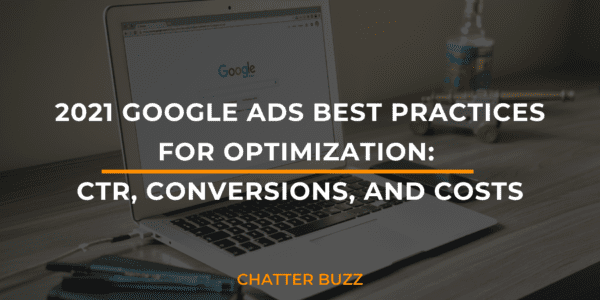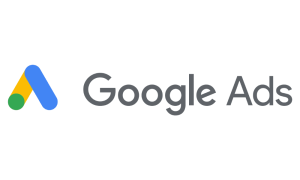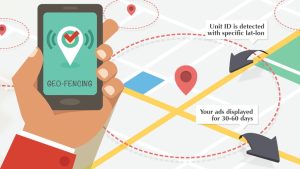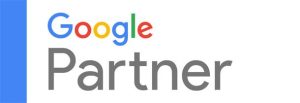2021 Google Ads Best Practice for Optimization: CTR, Conversions, and Costs

If you are planning on spending money on advertising to reach your target audiences, you need to make sure that you’re advertising in a way that works for you.
Google Ads is a popular method of advertising for many businesses.
The truth is, Google Ads might not be the best course of action for reaching your audience. Many businesses invest a lot of money in Google Ads, and the result rarely yields a positive return of investment (ROI).
The Google Ads landscape is very different from the one we had ten, five, and even two years ago. It is always evolving.
But Google Ads can be beneficial to your company, too! In this article, we’ll tell you the Google Ads best practices that have worked for our clients.
Let’s start with the basics: What is Google Ads?
What is Google Ads?
According to Google, Google Ads is an online advertising solution that businesses use to promote their products and services on Google Search, YouTube, and other sites across the web.

Google Ads also allows advertisers to choose specific goals for their ads, like driving phone calls or website visits. With a Google Ads account, advertisers can customize their budgets and targeting and start or stop their ads at any time.
Google Ads can be useful IF you know how to use it properly. As a business, you’ll want to know how to optimize your Google Ads strategy and ensure you get a positive yield on your investments.
At Chatter Buzz Media, we have led businesses to incredible success when it comes to generating sales through our Google Ads campaigns.
While we can’t spill all our secret ingredients, here are a few of the Google Ads best practices that we follow to yield a positive ROI for our clients.
Google Ads Best Practices
Let’s start with impressions and why they are important in your Google Ads campaign. Is your click-through rate below the industry average? Are you getting enough impressions to get the clicks you need to increase your CTR?
Impressions
The impressionrefers to the frequency at which your ad appears. Each time your ad appears on Google or the Google Network, it’s counted as one impression.
A section of your ad may be shown in some cases. Depending on your business type, Google Maps might display only your business’s name and location. Google Ads might also show your business name and your first line of ad text.
You can track how prominent your ads are by using impression share (IS) or absolute top impressions share (ATIS).
Impression Share (IS)
ISis the number of impressions your ads receive in comparison to all possible impressions. The impression share is calculated by dividing the number of impressions received by the total impressions that the ad was eligible for.

There are many factors that are considered when estimating eligible impressions, including the targeting setup, approval statuses, and the quality of the advertisement.
As a whole, impressions share provides a useful way to figure out if your ads will reach more people by increasing your bid or budget.
Absolute Top Impressions Share (ATIS)
ATIS is the percentage of your Shopping ads that appear in the most prominent shopping position on Google.
There’s only one “absolute top impression” per auction, so your absolute top impression share is an important indicator of your overall prominence.

An absolute top impression share is calculated by dividing impressions you’ve received in the absolute top location by the estimated number of impressions you were eligible to receive in the absolute top location.
By looking at the absolute top impression share, you can determine if your products will appear more prominently in shopping ads if your budget or bid are increased. In addition to campaigns, ATIS is available for ad groups and product groups (for Shopping campaigns).
Continuing to drive impressions will be key to brand success. Increased impressions will lead to increased engagement and community size along with all the other metrics we used to prove that social media is, in fact, relevant.
Clicks
Whenever someone clicks somewhere on your ad, such as the blue headline or phone number, Google Ads counts it as a click. You can use clicks to understand how appealing your ad is to people who see it.
Ads that are relevant and highly targeted will get more clicks. Even if the viewer does not reach your website after clicking, it is still counted as a click.
Consequently, you might see a different number of impressions, clicks on your ad, and visits to your website.
Click-Through Rate
Click-through-rate (CTR) is the percentage of people who click on your ad after seeing it. It’s shown in your account statistics.

You can use this metric to assess the effectiveness of your ad and how closely it matches your keywords and other targeting preferences. It is important to note that CTR is relative to what you’re advertising and where you are advertising.
The CTR of advertising creatives can be compared to one another in A/B testing, which helps to identify which of the creative features result in more interactions. In addition, CTR can be used to benchmark campaign performance in the context of other campaigns.
To some extent, the click-through rate may be used as an indicator of user quality within the wider attribution funnel. Advertisers can determine whether a high CTR is necessarily correlated with increased user value by tying campaign performance to in-app behavior.
Identifying whether certain channels offer high CTRs that will result in high-quality traffic – or simply a high volume of users – helps advertisers decide if they should make an investment in them.
Creating ads that are highly relevant and very compelling to your customers can help you increase your click-through rates.
Conversions
How do you track your marketing campaign efforts? Is it as simple as subscribing to your company’s blog, downloading a white paper, or viewing an important webpage on your website? What are the aspects of your business that matter most?
Regardless of how these visitors give you revenue, they’re converting by expressing their interest in learning more about the products and services you offer (which makes them attractive leads).
If someone engages with your ad or free product listing (for example, clicks a text ad or views a video ad) then takes action that you define as worthwhile for your business, such as an online purchase or phone call, that is considered a conversion.
Different conversion surfaces can be tracked (including mobile and desktop), as well as modeled conversions. Google uses model conversions to estimate conversions that it is unable to observe directly. This data is not identifiable to individual users.
A campaign with a higher conversion rate is generally more effective than one with a lower conversion rate.
With a higher conversion rate, you can cover more ground without having to increase your advertising budget, or you can reduce your advertising budget and still have extra money to test new marketing tactics.
Geo-fencing
We noticed that in 2021, an increasingly popular digital marketing business inquiry is how to determine a business’s conversion zone. In conversion zones, geo-fences are customized to be situated around a specific locationto track how many consumers received the business’ mobile advertising and subsequently physically visited the location.
Geofencing, a location-based marketing strategy, is derived from Harverstine’s mathematical formula. The geofencing calculation is the difference between the circle center and your location’s longitude and latitude.

Geofences are only valid if the distance is smaller than your circle’s radius. Otherwise, you will be outside the geofence.
This is one of the most useful marketing strategies to reach niche leads that are likely to convert into customers.
Cost
Businesses that are new to PPC advertising often perceive the practice as extremely expensive. Because of this, they end up spending their budget much more quickly than they expected.
For example, a business might set an advertising budget that will last an entire month. The budget is quickly depleted after just a few days.
How does this happen? It’s really important to understand PPC budgeting if you want to make the most of Google Ads.
Google Ads have an average cost-per-click (CPC) of $1 to $2 for the Google Search Network and less than $1 for the Google Display Network.
Automated Bidding
Automated bidding is the most popular option among new advertisers because it is the most effective and convenient.
You can use the “maximize conversions” strategy if you want to drive conversion actions like sales or leads. When it comes to receiving as many clicks as possible on your ads, you should consider the “maximize clicks” step.
You don’t have to set a maximum limit on your bid with automated bidding because you control how much you spend using your budget. Your campaign’s average daily budget, which you set, limits how much you spend overall.
Budget
Google can help you decide when to run your ad campaign during peak search traffic or when to anticipate a higher ROI on your ad spend. So, you might not achieve your budget on some days, while on others, you might surpass it.
In general, small-to-midsize businesses spend between $10,000 and $50,000 per month on Google Ads, excluding additional costs such as software.
 The starting budget recommendations of Chatter Buzz Media, a Google Partner strategist, depend on the size of the business, the industry, the goals, and the targeted markets.
The starting budget recommendations of Chatter Buzz Media, a Google Partner strategist, depend on the size of the business, the industry, the goals, and the targeted markets.
Now you decide: Will you use Google Ads?
It doesn’t matter how large or small your advertising budget is, Google Ads has the potential to help you succeed. Make the most of your ad spend by following the above tips, and test and tweak your ads consistently to maximize your Return On Investment (ROI).
The better equipped you are to build and optimize Google Ads campaigns, the higher your starting budget should be.
Businesses rely on Chatter Buzz Media to track Google Ads results and then make adjustments to their budget and strategy as required.
Submit your email below to receive more comprehensive information about how we can improve your Google Ads strategy today!








